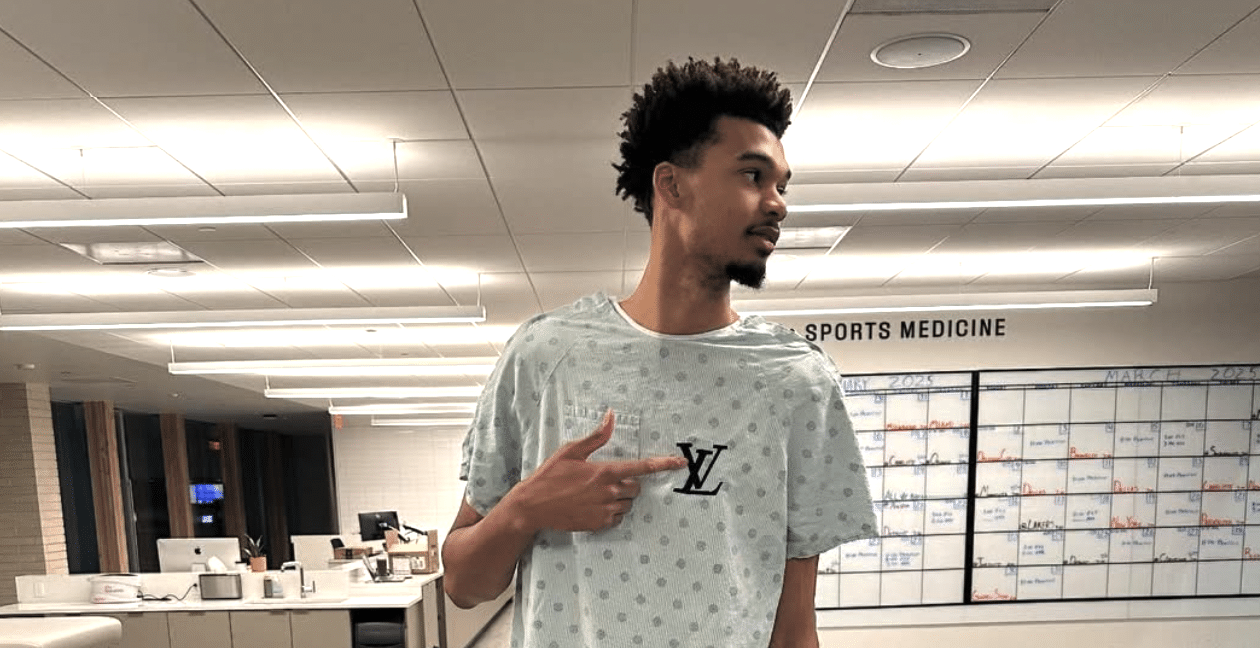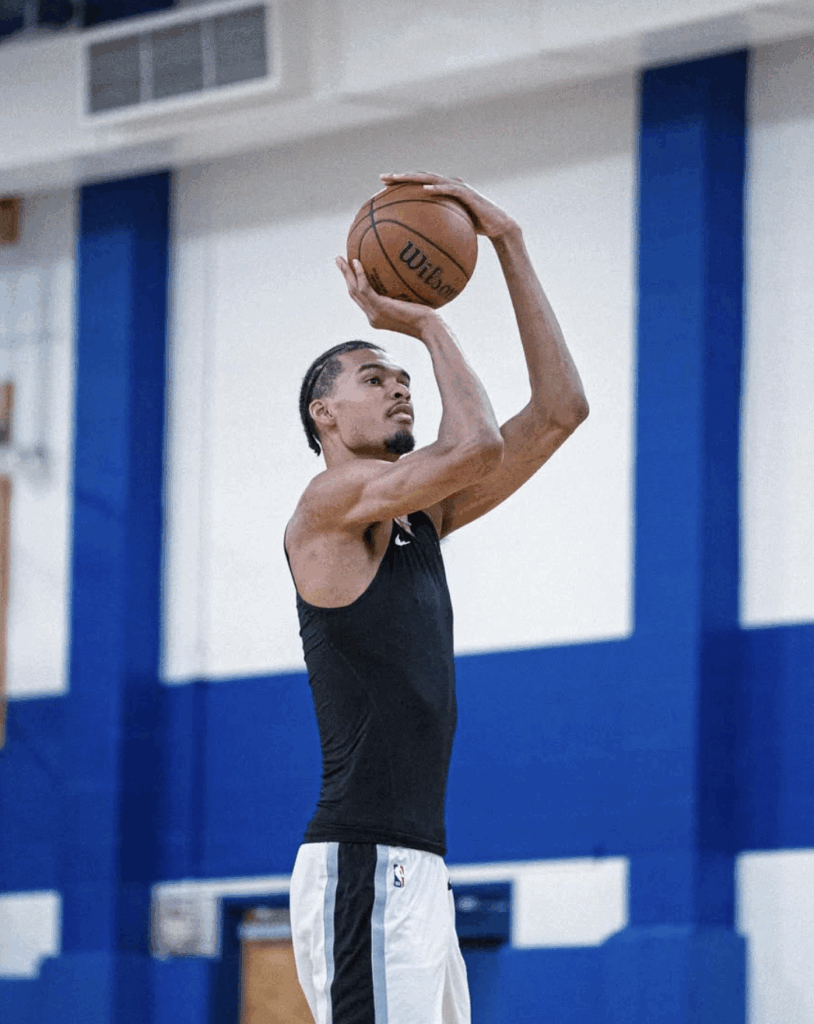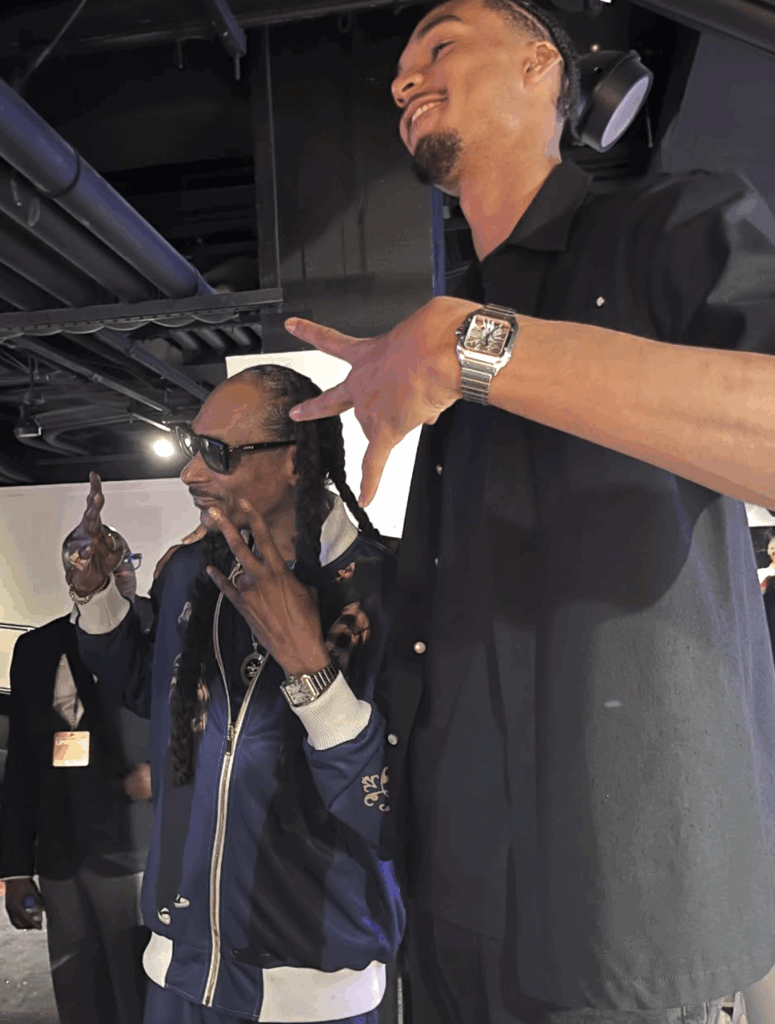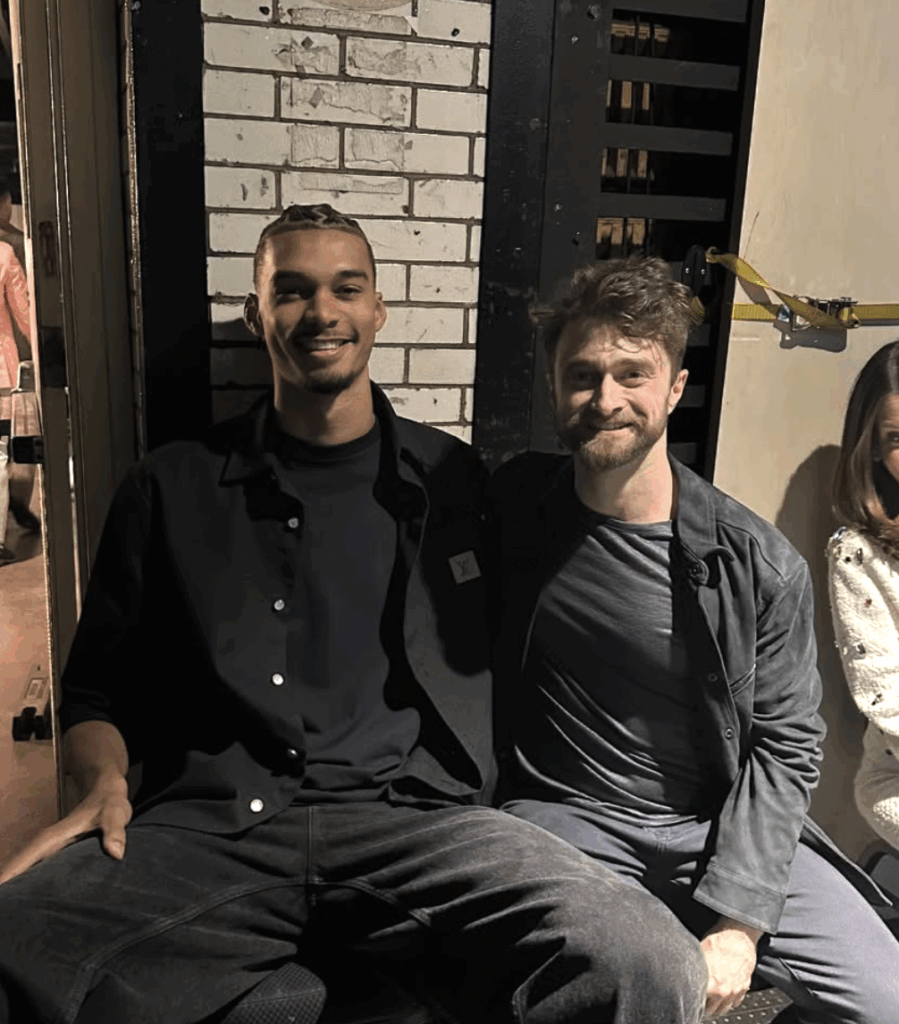Physical Address
304 North Cardinal St.
Dorchester Center, MA 02124
Physical Address
304 North Cardinal St.
Dorchester Center, MA 02124

Victor Wembanyama faced a terrifying health crisis that pulled him away from basketball in his sophomore NBA season. He needed surgery for a deep vein thrombosis in his right shoulder—something that could have ended his career or even his life.
The San Antonio Spurs star’s season stopped cold when doctors found the blood clot. Wembanyama’s diagnosis arrived midway through the 2024-2025 season, just as he seemed poised for a breakout year.
Now, he’s back and cleared to play. He returns to training camp with a different outlook on life and basketball.
That journey from hospital bed to hardwood just shows how fast everything can flip for pro athletes.

Wembanyama’s promising sophomore NBA season got derailed when doctors discovered a dangerous blood clot in his right shoulder. The 21-year-old Spurs star got the diagnosis right after the All-Star break, and that forced him into season-ending treatment for deep vein thrombosis.
The timeline of Wembanyama’s symptoms is still a bit murky in public reports. Still, the situation was urgent enough that doctors jumped into action as soon as they found the clot.

Deep vein thrombosis can show up in all sorts of ways. Typical symptoms include:
Some people don’t notice any symptoms, which makes DVT extra risky. Sometimes, there’s swelling and pain, but not always.
The Spurs shut down their franchise player immediately. With 30 games left, they put Wembanyama’s health ahead of any playoff push.
Doctors diagnosed Wembanyama after he returned from All-Star weekend. That timing suggests the medical staff took a close look at him after the break.
The news sent shock waves through the NBA. Fans and teammates worried about his future, and honestly, who wouldn’t?
Doctors wasted no time starting treatment. DVT usually means blood thinners or surgery, depending on where and how bad the clot is.

Treatment Timeline:
The Spurs’ medical team worked with specialists the whole way. Their cautious approach made sense, given the risks.
DVT happens when a clot forms in a deep vein, usually in the leg, thigh, pelvis, or arm. In Wembanyama’s case, it was his right shoulder—a less typical spot.
If left untreated, the risks are huge. Clots can break loose, travel to the lungs, and cause a pulmonary embolism, which is as scary as it sounds.
For athletes, DVT can come from a few places:
Most DVTs show up in the legs. Shoulders? Pretty rare. Maybe his 7-foot-3 frame and the crazy demands of his position played a role.
Wembanyama’s medical team didn’t waste a second—they went straight to surgery and comprehensive treatment. The operation aimed to fix the problem in his right shoulder and keep things from getting worse.
Wembanyama had surgery to address the DVT in his right shoulder. The French National team coach confirmed it happened soon after the diagnosis.
Doctors likely tackled thoracic outlet syndrome, which can pinch the main vein in the shoulder. That’s usually the culprit in cases like this.
Main surgical goals:
The Spurs’ medical crew joined forces with outside specialists. They put his future health above everything else, playoffs included.
Other NBA players have bounced back after similar surgeries. Brandon Ingram, for example, made it back to All-Star form after going through this in 2019.
Right after the diagnosis, Wembanyama started on blood thinners. These meds stop new clots from forming while his body works on breaking down the old one.
The head coach says Wembanyama is feeling good as he recovers. His plan includes close monitoring and slowly ramping up activity.
Post-op care means:
Contact sports are off the table while on blood thinners—too risky if you get hit. That’s why the NBA put him on the disabled list for the rest of the season.
Recovery usually takes months. Players need to stay on medication until doctors are sure the clot’s gone.
DVT is no joke for NBA players. Clots can travel to the lungs and cause a pulmonary embolism.
Chris Bosh went through this in 2015. His clots ended up in his lungs and, sadly, ended his career.
Major DVT complications:
NBA travel doesn’t help; long flights and sitting for hours up the risk. All that overhead arm motion in basketball can make shoulder vein problems worse, too.
At least four other NBA players have had DVTs, like Ausar Thompson and Christian Koloko. Most had to end their seasons right away.
The Spurs made the right call by putting Wembanyama’s health first. Playing with untreated DVT? That could’ve been fatal.
Wembanyama’s rehab from DVT is a careful mix of physical conditioning and strong team support. He can now lift heavy and do basketball work, but everything stays controlled and pretty light for now.
He’s made real progress in rehab. Now, he can do hard lifting again—something he couldn’t touch right after surgery.
Wembanyama works with therapists who know what it takes to treat DVT in elite athletes. His program focuses on rebuilding strength without pushing his shoulder too far.
Current training looks like:
Basketball drills are still very controlled, even though he sometimes wants to do more. The medical team keeps him on a tight leash to avoid any setbacks.
Medical staff monitor every part of Wembanyama’s training. Their early catch of his DVT probably saved him from worse outcomes.
The Spurs use high-tech gear to track his blood flow and heart rate during workouts. No contact drills yet—still too soon.
Wembanyama trusts his medical team and sticks to their plan. He says he’s “neither late nor early”—just on track.
Daily check-ins help doctors tweak his training. Regular blood tests and scans make sure the clot hasn’t come back.
The San Antonio Spurs have really stood by Wembanyama during his recovery. Mitch Johnson and the coaching staff keep him looped in with team activities, even on days he can’t play.
Wembanyama travels with the team to road games and takes his seat on the bench during home contests. Teammates like Jeremy Sochan and Harrison Barnes make sure he still feels like part of the group.
Team Support Elements:
Gregg Popovich’s coaching staff cares about more than just physical skills. Their holistic approach keeps Wembanyama mentally ready for his eventual return.
Victor Wembanyama has been officially cleared to return to full basketball activity after recovering from his blood clot. The Spurs star heads into the NBA season with sharper conditioning and, believe it or not, even more height—now 7-foot-4.
The NBA and Spurs gave Wembanyama the green light after his February blood clot diagnosis. He got treatment with blood thinners to dissolve the clot in his right shoulder.
He spent the summer ramping up his conditioning in some pretty creative ways. Wembanyama trained with Kung Fu monks in China and did on-court drills in Los Angeles.
“I can assure you, nobody has trained like I did this summer,” he said. He called his progress “incredible” and said he feels stronger and better than before.
The 21-year-old center is set to make his return in the Spurs’ first preseason game on October 6 against the Guangzhou Loong Lions.
Before the injury, Wembanyama put up some wild numbers in his second NBA season. He averaged 24.3 points, 11.0 rebounds, and 3.7 assists in 46 games.
His three-point shooting jumped to 35.2 percent on 8.8 attempts per game. That volume would have ranked ninth in the league if he’d played enough games to qualify.
Key Performance Metrics:
The French center is developing fast. With his confidence in what he did over the summer, it feels like he’s on the verge of another leap.
Wembanyama led the league with 3.8 blocks per game despite playing only 46 games last year. That kind of shot-blocking made him the NBA’s blocks leader.
But it’s not just about blocks. At 7-foot-4, he protects the rim and can switch onto smaller guys on the perimeter.
His mix of size, athleticism, and better conditioning puts him right in the mix for NBA Defensive Player of the Year. Those first few games back could really set the tone for his case.
His return gives the Spurs their defensive anchor again. He changes how teams attack and helps create turnovers, completely transforming the Spurs’ defense.
Recovering from deep vein thrombosis brought Wembanyama some unexpected mental strength. He also found himself experimenting with some pretty unique training ideas.
His journey included spiritual development with martial arts masters and personal growth through international travel. Not your average rehab, right?
The blood clot diagnosis forced Wembanyama to face his own mortality at just 21. That kind of scare shifts your priorities in a hurry.
He learned patience during the slow recovery. His recovery went well, but he had to trust the medical team and stick to their timeline, even when he wanted to push harder.
Key mental changes included:
Setbacks can open new doors. Now, he approaches challenges with more mental toughness than before.
During his recovery, Wembanyama went for Shaolin monk training in China. Not exactly what most NBA players do, but hey, it worked for him.
The kung fu training focused on balance and flexibility—things that directly help on the court.
Training components included:
The monks taught him ancient movement patterns. These exercises built up areas weakened by his downtime.
He also gained a better sense of body awareness. That helps him avoid awkward movements and, hopefully, future injuries.
International travel became a big part of his recovery. He used the time to explore new cultures and learn different training styles.
It broadened his perspective beyond basketball. He picked up new languages and studied various approaches to physical conditioning.
His travels also helped him get ready mentally for EuroBasket 2025. Playing for France takes understanding other basketball cultures and styles.
Personal development areas:
The Spurs backed his unconventional recovery plan. They saw that mental and spiritual growth could make him a better player—and just a better person.
This whole growth period changed how he sees basketball. Now, it’s part of his life journey, not his whole identity.
Wembanyama’s injury sent shockwaves through the basketball world. It affected everything from San Antonio’s playoff hopes to bigger questions about player health and career uncertainty.
The Spurs really struggled after losing their franchise cornerstone. Their record dropped to 31-41 as they tried to adjust without their defensive anchor and main offensive threat.
San Antonio made moves to stay in the hunt, even landing All-Star guard De’Aaron Fox. Still, Fox couldn’t replace everything Wembanyama does on both ends.
The young roster had to grow up fast. Jeremy Sochan and Devin Vassell stepped into bigger roles, which might help long-term, but the short-term results were tough to watch.
Key Changes Without Wembanyama:
Wembanyama joins a small group of NBA players who’ve dealt with blood clots. At least four others have faced DVT, including Chris Bosh, Brandon Ingram, and Ausar Thompson.
Success Stories:
Career-Ending Cases:
The location really matters. Shoulder clots often come from anatomical issues that surgery can fix, which gives Wembanyama better odds than those with leg clots.
Wembanyama’s international status is still up in the air. His availability for EuroBasket 2025 is unknown while he focuses on full recovery.
France’s national team will wait for medical clearance. Wembanyama wants to lead his country, but he’s got to be healthy first.
Recovery Timeline Factors:
The NBA expects him back for the 2025-26 season. If his recovery looks anything like Ingram’s, he could return even stronger. The medical staff is playing it safe, which should help his long-term outlook.
His rookie contract extension is also in play. Teams want health certainty before making big financial moves, so that’s something to watch.
Victor Wembanyama’s deep vein thrombosis diagnosis and surgery raised a lot of questions about his treatment and recovery. Fans are especially curious about the medical procedures, rehab timeline, and how he plans to prevent future issues as he works his way back to basketball.
Wembanyama had surgery to treat deep vein thrombosis in his right shoulder. The doctors aimed to remove a blood clot that had developed in the deep veins there.
Surgeons usually remove the clot or sometimes place a filter to stop it from traveling elsewhere. The method really depends on where the clot is and how big it is.
Sometimes, doctors insert a catheter to send clot-dissolving medicine right to the problem spot. That approach tends to work better than just using oral meds.
The rehab process for athletes with deep vein thrombosis depends a lot on how bad and where the clot is. Usually, it takes months of slow, careful monitoring before getting back to full activity.
Wembanyama was shut down for the rest of the 2024-25 NBA season after his diagnosis in February. His recovery will stretch well past the usual basketball schedule.
Most athletes have to wait until blood clot markers return to normal before ramping up their training. That can mean three to six months or more, depending on how things go.
Bleeding is a big risk after surgery, especially with the blood thinners needed to prevent new clots. Athletes have to walk a fine line between preventing clots and avoiding injuries while staying active.
There’s always the worry about clots coming back, particularly if someone jumps back into hard training too soon. Regular checkups help catch any new clots quickly.
Other possible problems include infection at the surgery site and damage to blood vessels. So, ongoing medical supervision is pretty much a must during recovery.
He’s probably on long-term anticoagulation therapy to keep his blood from clotting too easily. How long he stays on it will depend on why he developed the clot in the first place.
Doctors run regular blood tests to track clotting factors and make sure his meds are doing the job. They tweak dosages as needed, based on test results and how active he gets.
There are also lifestyle tweaks—things like specific warm-ups, staying hydrated, and moving around during long flights. All of this helps keep his blood flowing the way it should.
Blood thinners can boost the risk of bleeding, which is a real concern in contact sports or heavy training. Athletes have to juggle the need for safety with their drive to compete.
Time away from training means losing some fitness and muscle strength. Wembanyama’s going to need a while to rebuild after so much time off the court.
There’s also the mental side—being sidelined for months can really mess with an athlete’s confidence and spark anxiety about returning. It’s not just physical; the mind takes a hit too.
Vascular surgeons usually take the lead when it comes to deep vein thrombosis cases. They keep an eye on healing and tweak treatment plans if something’s not working.
Hematologists handle the blood-thinning meds and keep track of clotting factors during recovery. Honestly, they have to stay in sync with team doctors to make sure nothing slips through the cracks.
Physical therapists step in to help athletes ease back into activity, especially when medications are in play. Sports medicine doctors? They’re the ones who try to balance strict medical needs with whatever the athlete’s body demands on the court.